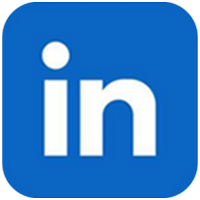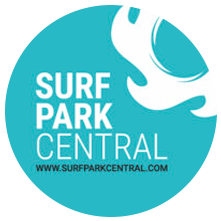By Jess Ponting



A new peer-reviewed academic journal article on surf parks came out in January this year. Why is this important? It is only the second double blind peer-reviewed academic journal article on surf parks to be published, ever.
Even more interesting, it is authored by two significant sports industry/science academics out of South Korea, Byun Jin Su and Choi Kyu Ha who did some qualitative work at Wave Park, the Wavegarden Cove facility outside of Seoul. The reputable journal Leisure Studies published the article titled Riding artificial waves: the hybridisation of surfing in urban spaces. Byun and Choi’s article frames their analysis of 12 qualitative interviews with Wave Park users in terms of cultural hybridization (please note the small sample size of regular users – adequate for qualitative analysis of regular users but not representative of the broader Wave Park experience across different user groups).
While not producing any groundbreaking new insights (not a diss, these guys did good work) the article describes the surfing experiences of South Koreans and reports a 10x growth in the population of Korean surfers from 40k to 400k over the past 10 years. Byun and Choi frame their article as an effort to build on a 2020 article of my own – Arguing authenticity in an era of surfing the hyperreal, written with Dr. Mike Roberts which is discussed in Episode 8 of Surf Park Central’s “Insiders” video episodes.
In an attempt to analyze the impact of surfing in artificial environments on surfing culture, Dr. Roberts and I drew from Jean Baudrillard’s theory of simulation and the hyperreal to examine how simulated waves in wave pools challenge traditional notions of “real” surfing. We applied Baudrillard’s concept of the hyperreal, where simulations can become more real than the original, to explore whether artificial waves might become the new standard for evaluating ocean waves. Additionally, we utilized Walter Benjamin’s theory of mechanical reproduction and the concept of “aura” – the unique presence and authenticity of an original work of art.
Byun and Choi extend our analysis by bringing in the idea of cultural hybridization informed by the work of Arjun Appaduri and Homi Bhabha. Appadurai contributed to cultural anthropology, globalization studies, and postcolonial theory with his concept of ‘scapes’—ethnoscapes, mediascapes, technoscapes, finanscapes, and ideoscapes—which provide a framework for analyzing the flows of people, technology, media, capital, and ideas across national and cultural boundaries. Bhabha on the other hand introduced the concepts of ‘hybridity’ and the ‘third space,’ which have become central to discussions of cultural identity and difference. The ‘third space’ refers to a site of cultural negotiation and exchange where new meanings and identities emerge, challenging traditional binary understandings of identity and culture, expanding possibilities for cultural hybridity within the global flow of influences in settings … like surf parks in urban South Korea.
Byun and Choi take a really interesting theoretical approach, but the paper didn’t get too much beyond intuitive ideas including:
- Surf parks with heated water in urban settings like Seoul can provide much more easily accessible surfing experiences to large population centers hampered from surfing by geography and bitterly cold winters.
- Regular surf park users are mindful and deliberate in using surf park time to improve their surfing skills.
- Surf parks may well be causing a hybridization of surfing culture.
I’m stoked to see academics starting to address all the interesting things that surf parks bring along for the cultural ride. What was perhaps culturally different, or perhaps a function of climate and surf park design was that some participating in the South Korean study reported the surf park experience being more solitary than an ocean surfing experience. Show up to surf. Surf. Go home. Still a positive experience but less social than ocean surfing experiences these same surf park users were used to.
Reading this new 2025 article, and re-reading my own from 2020, got me thinking about surf park culture and how these insights echo and reflect, confirm and contradict, some of the 2024 surf park consumer trends I’ve been analyzing and some less formal data points that I suspect are indicators of where this is all going – at least from a Euro/Western perspective.
The 2024 Surf Park Central Consumer Trends Survey included a five-point Likert scale from “not important” to “extremely important” across a range of possible ancillary components at a surf park. Coding these answers as 1 = not important through to 5 = very important we can average out responses to a score out of 5 where anything above 2.5 is at least somewhat important to surf park users. The closer to 5 the response, the more important the ancillary component, anything below 2.5 is not really that important. I’m going to be releasing these results more formally and with more detail cross tabulated by different user groups in the coming months, but for now, here is a list of 16 ancillary components to a surf park, in descending order of importance.
| Ancillary Component | |
| Video capture and photography | 3.62 |
| High-quality surf instruction | 3.5 |
| Coaching | 3.44 |
| Family-friendly non-surfing activities | 3.43 |
| Community groups and events | 3.27 |
| High-quality restaurant | 3.21 |
| Onsite hotel | 3.07 |
| Bar | 3.04 |
| Skateboarding features e.g. pump track/bowl | 3.01 |
| Onsite camping | 2.99 |
| Onsite condos/villas | 2.91 |
| A platform to share my videos and photos | 2.9 |
| Onsite glamping | 2.85 |
| Spa | 2.82 |
| Competitive local surfing leagues | 2.81 |
| Gym | 2.61 |
The most important ancillary components reported by 1,863 surf park users were essentially stuff that can help you get better at surfing (parallels the South Korean experience), stuff that will help the family hang out for longer, and stuff that helps to build community. While this is not reflected in the 2025 paper by Byun and Choi, my sense is that the family and community building elements are likely to be reflected in Wave Park users’ experiences if the surface was scratched a little deeper and broader, with a wider variety of users, and at different times of the year.
Just in the last week, I’ve been learning about two innovative marketing initiatives that really drive home the potential value of surf park community building. One surf park, who I won’t mention by name here because my knowledge is so recent that I’ve not cleared it, but who you can hear from directly at the European Surf Park Forum in April or the global Surf Park Summit in November, has employed a full-time schools coordinator. This team member has developed a significant STEM program built around school visits to the surf park. I personally know of businesses that have had success making it easy for school teachers and principals to plug an off campus experience into a curriculum that deliberately, explicitly, and accurately meets their student learning objectives. I can only imagine how stoked my kids would be if their next school field trip was to a surf park where they learned about otherwise boring topics in the context of surfing AND got to go surfing as part of the experience.
I’m actually a sucker for this approach. I’ve employed the same tactic at San Diego State University where going back to 2012, I have run study abroad classes to surfing destinations to learn about sustainable tourism. I’ve more recently developed two general education classes, one in social and behavioral sciences, and another in physical sciences that are both taught in the context of surfing. Students barely know they are learning because they are stoked to be exposed to the wonderful stories involved in surfing history, culture, and science.
Now, imagine every school child within your regional catchment visits your surf park as a part of the mandated STEM curriculum that is incredibly interesting, fun, and, dare I say it, addictive. What might that mean for building a base of local visitors that is immune to the ebbs and flows of tourism visitation? How many return visits outside of the school field trip might this generate? How many slow Tuesday afternoons might be filled to capacity with school visits? Genius.
In Australia, URBNSURF has innovated with a monthly bodyboard only session late evening on the first Tuesday of each month. In addition to filling an otherwise difficult slot with sold out sessions, the community building component of this initiative appears to have been a wild success. The URBNSURF bodyboarder social media accounts are a testament to how stoked the often maligned bodyboarding community is to have their own sessions and how good the vibe is between them. Here are some quotes from social media posts:
- BOOGIE NIGHTS!! Let’s Gooooooooo! YEEEEEEEEEWWWWW (three shakas)
- Epic night last night folks, the vibe in the pool so so good with a bunch of lidders.
- Although sleep deprived, partially delirious, and well and truly over caffeinated, boogie nights was a damn good time last night … Shout out to all the frothers who set the vibe. Stay stoked legends.
- Was great to meet all the rad dudes for boogie nights. Great vibes and great stoke.
- First boogie night for me. I really enjoyed the surf and the friendly people. Such a rad group. Thanks again guys!
Boogie Nights are bringing long retired bodyboarders back into the water. The following quote reflects several in the social media thread.
After a 30-year hiatus, I dove back into the pool at Boogie Nights … the rush of excitement was addictive. Thanks to many mates for getting me back in the water.
Many bodyboarders are posting clips of their practice sessions to warm up for the Boogie Nights sessions (i.e. it is creating even more demand from the bodyboarding community) and additional sessions where they stayed an extra day to get additional sessions after the event. Many are reaching out to encourage others to join the advanced sessions they are attending (the most expensive sessions where a free slot means lost revenue). I really love these situations where everyone is winning. Well done URNSURF!
While Byun and Choi formalize the obvious, that surf parks facilitate skill progression and contribute to the hybridization of surfing culture, the Surf Park Central consumer trends research emphasizes the importance of ancillary components that enhance the overall surf park experience focusing on skill development, family engagement, and community building.
For surf park operators, these insights translate into actionable strategies: prioritize high-quality instruction and coaching, design spaces and programs that cater to families, and actively foster a sense of community. Innovative marketing initiatives, such as school STEM programs and specialized community events like “Boogie Nights” for bodyboarders can build a loyal customer base and maximize facility use.
I think that all this research and innovation is paving the way for surf park operators to continue to create vibrant, sustainable businesses that not only provide access to surfing but also enrich the cultural fabric of the communities they serve.






























You must be logged in to post a comment Login